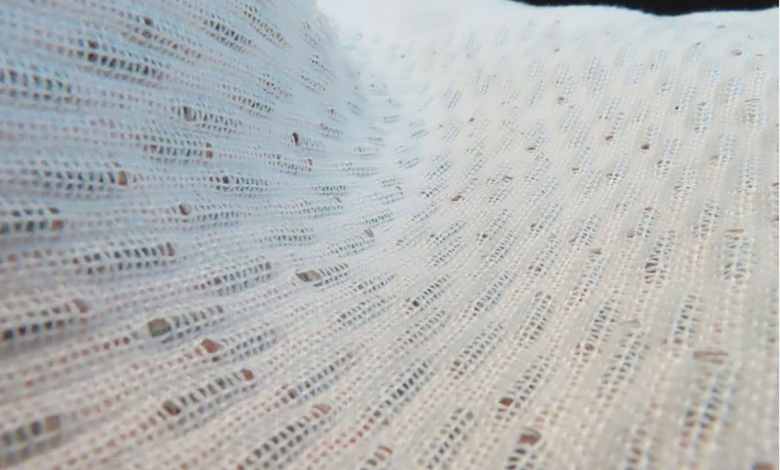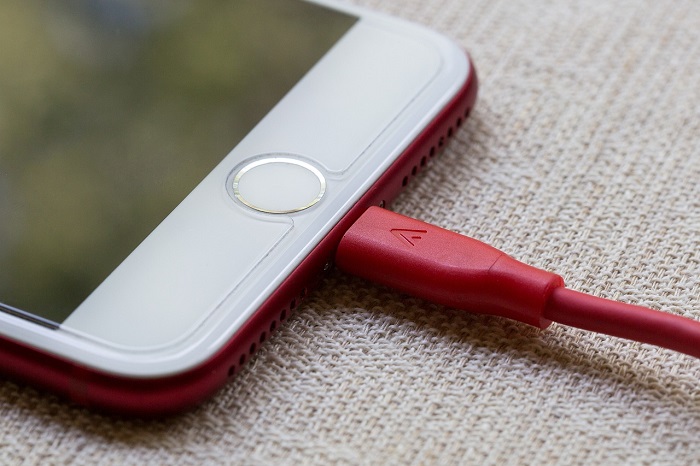ISABEL RUBIO ARROYO | Tungsteno
Imagine not needing a traditional charger to charge your mobile phone. Or take it a step further and use what you are wearing—a jacket or pair of trousers, for example—to charge it. That's what a team of researchers at Nottingham Trent University in the UK claim to have invented: a woven textile embedded with miniature solar cells that can charge a smartwatch or mobile phone.
More than 1,000 tiny photovoltaic cells embedded in a jacket?
The researchers' goal was to create a textile solar panel that is breathable and soft to the touch. "We have combined long-established weaving techniques with modern technology to create future products which may change people's perceptions of clothing and electronics," says Matholo Kgatuke, one of the researchers and an expert in the weaving of electronic textiles.
The prototype textile solar panel has 1,200 solar cells five millimetres long and 1.5 millimetres wide, embedded in a waterproof polymer resin, according to a statement released by Nottingham Trent University. Together, the cells combined are theoretically capable of harnessing 400 milliwatts of solar energy. The researchers say the e-textile could be incorporated into a garment, such as a jacket, or an accessory, such as a backpack, and used to charge devices.
The fabric has solar cells for charging devices. Credit: Nottingham Trent University
Portable charging meets fashion
Electronic yarn (e-yarn) technology has been used to manufacture this textile. The solar panel fabric in question measures 51 by 27 centimetres and is equipped with strong but highly flexible wiring that the designers claim can be machine washed at 40°C with other laundry. "The material we have developed, for all intents and purposes, appears and behaves the same as any normal textile, as it can be scrunched up and washed in a machine," says Theodore Hughes-Riley, the researcher who led the project.
The expert, Associate Professor of Electronic Textiles and part of the Advanced Textiles Research Group at Nottingham Trent University's School of Art and Design, explains that both electronic textiles and wearable devices require a power source, which is often a battery. "The impetus for this work has been to develop a lightweight and unobtrusive portable power source for these devices. This may not completely replace the battery for some applications, but it could provide a portable charging solution," he tells Interesting Engineering.

The fabric has 1,200 photovoltaic cells five millimetres long and 1.5 millimetres wide. Credit: Nottingham Trent University.
A replacement for chargers?
In the short term, it does not look like this fabric will replace traditional chargers, and it is too early to say whether it will eventually be incorporated into commercially available clothing. For now, there are still some limitations. While the researchers hope to integrate the technology into commercial products, it is still just a prototype. Hughes-Riley admits that it could be a few years before this happens.
In addition, many of the technical details of this prototype are unknown, and the results have not been published in a peer-reviewed journal—where outside scientists evaluate the details. In addition, the production of this solar panel involves "a lot of manual processes", so it is "quite time-consuming." "In the future, we hope to automate more of the production process so that we can produce textile solar panels like this quickly," says Hughes-Riley. Such clothing could be more expensive than conventional clothing, which could limit its accessibility and market acceptance.
Despite the limitations, "this prototype offers an exciting glimpse into the future potential of electronic textiles." Other researchers are also trying to create textiles that can power a variety of devices. But for now, these are one-off projects. "Until now, very few people would have considered that their clothing or textiles could be used to generate electricity," says Hughes-Riley. It remains to be seen whether these projects will change, and whether these new fabrics will manage to find a place in the market.
· — —
Tungsteno is a journalism laboratory to scan the essence of innovation.
